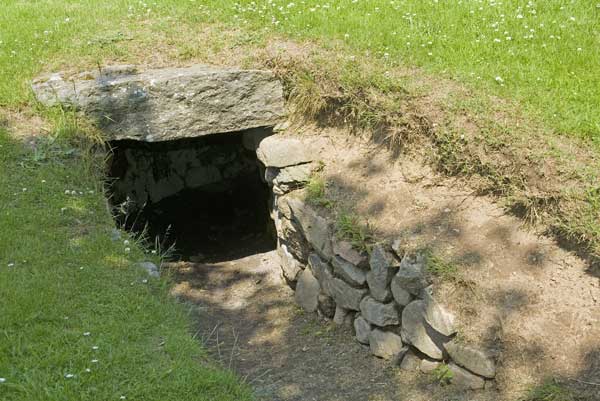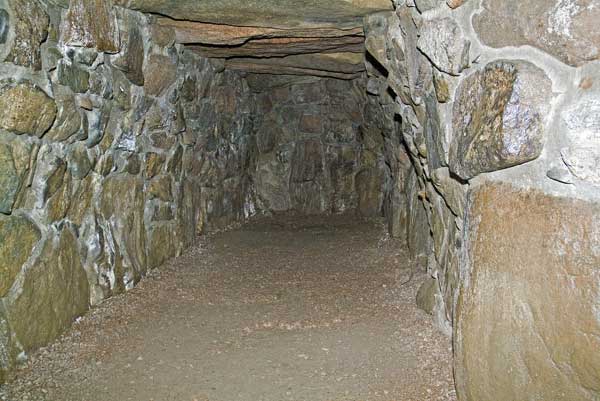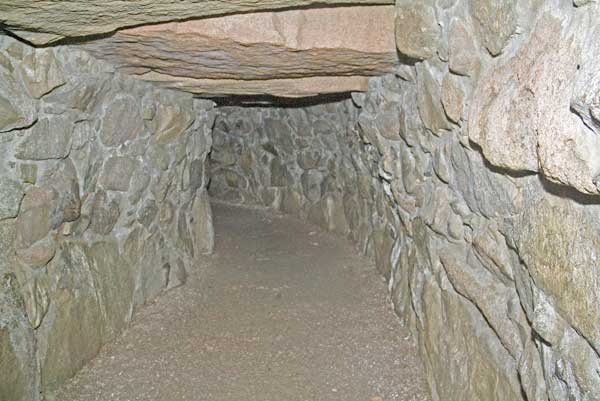Location
South side of Tarland Road B9119, about half way between the Slack viewpoint and the village at the end of the road to Culsh farmsteading
Tarland, Aboyne, Aberdeenshire
OS Map Reference
NJ 505 055
Date
Iron age
Description
Souterrains are a type of iron-age architecture that seems to have been fairly common in the area that is now Aberdeenshire, the most common assumption is that they were used for storage of grain and other food-stuffs. Souterrain curved and lined with dry stone walls (the walls have been mortared in modern times) and heavy roof slabs. Accessible but the visitor will require a torch to explore the few metres of passageway inside.
Various authorities report 1 or 2 possible cupmarks on left wall (cupmarks are usually thought to have been created in earlier periods, their occurrence in iron age and later artefacts could be taken as an indication of some special respect for these older interventions).
The 19th century excavation finds were reported by A Jervise 1865, as the floor being littered with ashes, 2 querns, some unglazed pottery shards, cattle bones and a large bead.
Related Information
"This souterrain shows the characteristic curved plan and is 14.3m long by 1.8m wide and high at the inner end; it was constructed by digging a trench into the rocky subsoil, lining it with drystone walling and roofing it with substantial stone slabs. When it was cleared out (about 1850) it was found to be filled 'nearly to the top with... a rich unctuous earth', which suggests that it had been in filled deliberately, like souterrains further south." I A G Shepherd 1986.
Shepherd, I A G (1986 a) Exploring Scotland's heritage: Grampian,
RCAHMS http://www.rcahms.gov.uk/
Drummond (1874) reports seeing two 'Eirde Houses' at Culsh
Mitchell and Drummond, A and J (1875 ) 'Vacation notes in Cromar, Burghead, and Strathspey. Including notice of one of the supposed burial-places of St Columba', Proc Soc Antiq Scot, 10, 1872-4, 604,
Floor was littered with ashes, and the only relics obtained from its excavation were fragments of coarse, unglazed pottery, a large bead, cattle bones and two querns.
A Jervise 1865; W D Simpson 1943; MoW 1967.
Era
Iron age
Information Source
RCAHMS http://www.rcahms.gov.uk/
Related Artefacts
Categories
Iconography
- cup and ring marks
Photographer
- Jim Henderson
Unavailable Data
- Creator
- External Links
This content was submitted by external contributors and does not necessarily reflect the views of the University of Aberdeen.




